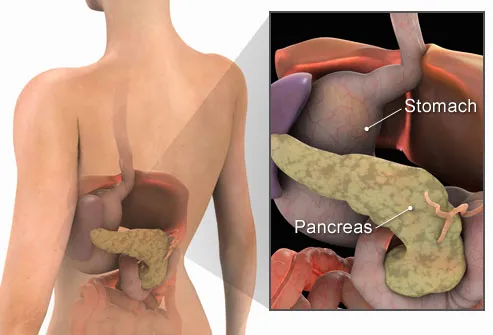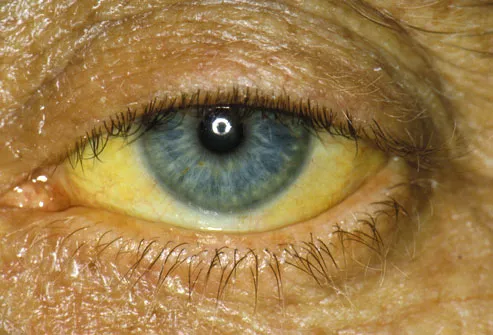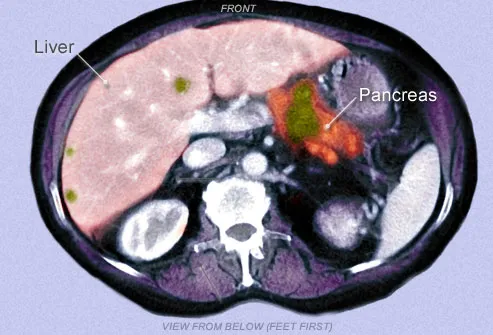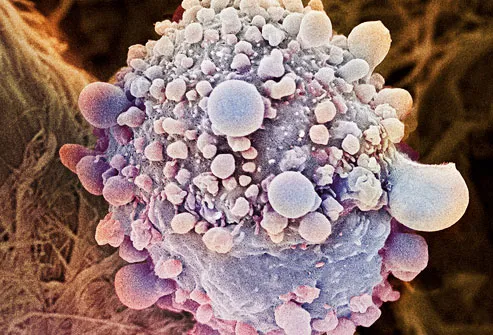Berikut merupakan kutipan ilmiah kesehatan dari media online yang sangat bermanfaat bagi Penulis sehingga digunakan sebagai referensi pribadi.




Stage is a term used in cancer treatment to describe the extent of spread of the cancer. The stages of pancreatic cancer are used to guide treatment and to classify patients for clinical trials. The stages of pancreatic cancer are:
- Stage 0: No spread. Pancreatic cancer is limited to a single layer of cells in the pancreas. The pancreatic cancer is not visible on imaging tests or even to the naked eye.
- Stage I: Local growth. Pancreatic cancer is limited to the pancreas, but has grown to less than 2 centimeters across (stage IA) or greater than 2 centimeters (stage IB).
- Stage II: Local spread. Pancreatic cancer has grown outside the pancreas, or has spread to nearby lymph nodes.
- Stage III: Wider spread. The tumor has expanded into nearby major blood vessels or nerves but has not metastasized.
- Stage IV: Confirmed spread. Pancreatic cancer has spread to distant organs.
Determining pancreatic cancer's stage is often tricky. Imaging tests like CT scans and ultrasound provide some information, but knowing exactly how far pancreatic cancer has spread usually requires surgery.
Since surgery has risks, doctors first determine whether pancreatic cancer appears to be removable by surgery (resectable). Pancreatic cancer is then described as follows:
- Resectable: On imaging tests, pancreatic cancer hasn't spread (or at least not far), and a surgeon feels it might all be removable. About 10% of pancreatic cancers are considered resectable when first diagnosed.
- Locally advanced (unresectable): Pancreatic cancer has grown into major blood vessels on imaging tests, so the tumor can't safely be removed by surgery.
- Metastatic: Pancreatic cancer has clearly spread to other organs, so surgery cannot remove the cancer.
If pancreatic cancer is resectable, surgery followed by chemotherapy or radiation or both may extend survival.
Treating Resectable Pancreatic Cancer
People whose pancreatic cancer is considered resectable may undergo one of three surgeries:
Whipple procedure (pancreaticoduodenectomy): A surgeon removes the head of the pancreas, parts of the stomach and small intestine, some lymph nodes, the gallbladder, and the common bile duct. The remaining organs are reconnected in a new way to allow digestion. The Whipple procedure is a difficult and complicated surgery. Surgeons and hospitals that do the most operations have the best results.
About half the time, once a surgeon sees inside the abdomen, pancreatic cancer that was thought to be resectable turns out to have spread, and thus be unresectable. The Whipple procedure is not completed in these cases.
What is the Pancreas?
The pancreas is a 6-inch-long spongy, tube-shaped organ located in the back of the abdomen, behind the stomach. It has two major jobs in the body: to make digestive juices (enzymes) that help the intestines break down food, and to produce hormones -- including insulin -- that regulate the body's use of sugars and starches. Pancreatic cancer occurs when malignant (cancerous) cells grow, divide, and spread in the tissues of the pancreas.

Symptoms of Pancreatic Cancer
Pancreatic cancer is called a "silent" disease because symptoms typically do not present in the early stages. But as the cancer grows and spreads, pain often develops in the upper abdomen and sometimes spreads to the back. The pain may become worse after the person eats or lies down. Other symptoms may include jaundice, nausea, loss of appetite, weight loss, fatigue, weakness, and depression.

Causes of Pancreatic Cancer
Although the exact cause of pancreatic cancer is not known, smoking is the main risk factor, with smokers 2-3 times more likely to have the disease than nonsmokers. Age is also related, with the disease usually striking after age 45. Diabetes is also linked to pancreatic cancer, with about 10%-20% of those diagnosed with the cancer having diabetes. Other risks include chronic pancreatitis and cirrhosis of the liver. And family history of pancreatic cancer, high fat diet, obesity, and lack of exercise can also play a part.
Diagnosing Pancreatic Cancer
The challenge of this disease is finding it early. A doctor cannot see or feel a tumor during a routine exam. To help make the diagnosis (and determine the most appropriate treatment), imaging tests are performed (such as an ultrasound or CT scan) to view pictures of the abdomen and determine the extent of the problem. The green region shown in this colorized CT scan appears to be cancer in the pancreas and liver. The diagnosis comes from a biopsy -- taking a tissue sample from the tumor -- performed either with a needle through the skin or during an operation.

Treatment: Surgery
Surgery can cure the cancer if it has not spread past the pancreas. Since side effects depend on the extent of the surgery, the tumor is removed leaving as much of the normal pancreas intact as possible. Unfortunately, with pancreatic cancer, the malignant cells usually have spread past the pancreas at the point of diagnosis. Surgery still may be performed, even if the tumor is too large to remove. The surgery would involve procedures to help lessen some of the symptoms and prevent certain problems related to the size of the cancerous mass.
Treatment: Radiation Therapy
Radiation therapy uses high-powered radiation to kill cancer cells. Radiation is usually given five days a week for several weeks or months. This schedule helps to protect normal tissue by spreading out the total dose of radiation. Radiation is also being studied as a way to kill cancer cells that remain in the area after surgery. Radiation therapy can help relieve pain or digestive problems caused by large cancerous masses.
Treatment: Chemotherapy
Chemotherapy uses drugs to destroy cancer cells and stop them from growing or multiplying. Treatment may consist of just one drug or a combination of drugs. It may be given by mouth or by injection. The drugs enter the bloodstream and travel through the body, making chemotherapy a good choice for cancer that has spread. It is also useful after surgery to kill any cancer cells left behind.
Treatment: Targeted Therapy
Newer drugs on the market have the ability to attack specific parts of the cancer cells. Targeted therapies appear to have fewer side effects than chemotherapy and are less harmful to normal cells. Targeted therapy is currently being studied for treatment of pancreatic cancer.
Shown here is a color enhanced, magnified view of a pancreatic cancer cell.

New Anticancer Treatment: Immunotherapy
Also called biological therapy, immunotherapy aims to boost a person's immune system to fight disease. Immunotherapy is not yet available for pancreatic cancer, but is being actively researched, along with the investigation into vaccines that arm the immune system to attack cancer cell.
Treatment: Palliative Therapy
Palliative therapy is used to ease symptoms and manage pain regardless of the stage of the disease or the need for other therapies. The goal of palliative care is to improve quality of life not just in the body, but in the mind and spirit. While palliative therapies are clearly appropriate at the very advanced stages of the disease, they are also helpful when given in tandem with other cancer treatments still working to fight the disease.
Getting Support
Living with pancreatic cancer isn't easy; a support system is critical to help cope with the emotional and practical aspects of this aggressive disease. Many avenues for support exist within the local community and beyond, both for the patient and their family and friends. These organizations exist to help navigate the day-to-day treatment issues and the "big picture" worries about the future.
Is Prevention Possible?
Although there's no one definite action you can take to prevent pancreatic cancer, start by avoiding the risk factors you can control.
- If you smoke, quit now.
- If your diet is high in fat, work to eat more healthfully.
- Adopt a regular exercise routine, since exercise has been shown to lower the risk of pancreatic cancer.
- Pancreatic Cancer Action Network: 877-272-6226
- American Cancer Society: 800-ACS-2345
- Cancer Care: 1-800-813-HOPE (4673)
Tidak ada komentar:
Posting Komentar